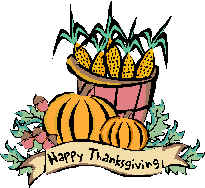 |
A
Sukkot Story The Bible
(Leviticus 23:40) tells us that we are supposed to take the fruit of a goodly tree and use
it on the holiday of Sukkot. But which tree is the "goodly" one? Tradition says
that it is a citrus tree. Indeed, the English name for etrog is citron, and you can see
how the name citron is related to citrus. But that still doesn't tell us why the etrog was
the type of citrus fruit that was considered good. It all goes back a long time ago to a
king. This king, unlike most kings, was poor; he also was fat, felt life was tasteless,
and was very unhappy.
One day he prayed to God to find the answer to all of his problems. That night he had a
dream. In the dream he was told that he would find the answer to his problems in a citrus
fruit. The next morning he sent for his wise men. Since there were no citrus fruits
growing at that time in the Middle East, he sent them out to bring back the right fruit.
After a few weeks one of the wise men returned with an orange. "This fruit is very
good," the wise man said, "it is sweet, and if you squeeze it, its juice makes a
wonderful drink. If we plant these trees and grow the fruit we will be able to squeeze the
oranges and put the juice in cans and export it to our neighbors. We will become
rich." The king did as the wise man suggested and within a few years he and his
country were rich and prosperous. However, the king still was not happy because he was
still fat and life still seemed tasteless.
He called his wise men together and told them that this citrus fruit could not be the one
in his dream. He sent them forth to find another citrus. After a couple of months one of
them returned with a grapefruit. The wise man explained that the grapefruit was low in
calories. Like the orange it could be squeezed and sold in cans. It also could be sold in
sections for salads, and people on diets would love it. The king had grapefruit trees
planted and ate the grapefruits regularly. His diet was a success and he was no longer
fat. But he still was not happy. Life was tasteless.
The king called his wise men together and sent them out once again to find a citrus which
contained the answer to his unhappiness. After six months one of the wise men returned
with a lemon. He gold the king that the lemon could be used in salads, in tea, on fish or
chicken and that it would give to almost all foods an extra zing and a special taste. The
king used the lemon and many others on his food. His food was tasty. He now was a rich,
slender king with tasty food. But he still wasn't happy. And to make it worse, he didn't
know why he wasn't happy. He called all his wise men together. But none of them could
figure it out either. One of them suggested that he ask a Jewish sage who was traveling
through the country at the time. When the sage was told of the king's problem, he produced
an etrog. "What will it do for me?" the king asked. "Nothing," the
Jewish sage said, "but God has made everything for a purpose so, it's up to you to
figure out what the purpose is of an etrog. It doesn't taste good. It won't make you thin
or rich. It's for a person who has everything."
The king began to think about the etrog. "It's true," he said, "I do have
everything I need. I have my family, and my work, and my home, and my friends. I really
don't need any more things." He began to feel happy. He prayed to God, and instead of
asking for something, as he had always done
in the past, he thanked God for all that he had.
That is why the Bible tells us to use an etrog for Sukkot. The etrog doesn't do anything
for us. It just reminds us to be thankful for all that we have. It's the perfect gift for
the person who has everything, because by understanding and appreciating what we have we
realize that we really have all that we need to make us happy. The etrog is the only fruit
that doesn't rot. You can keep it for months or even years. In the same way, the person
who is satisfied with what he has will never be unhappy when he loses something. His
happiness comes from within. The etrog is indeed a goodly fruit because it teaches us what
is really good for us. |
 |



